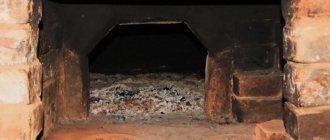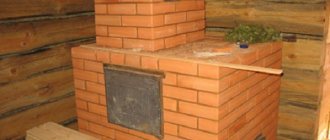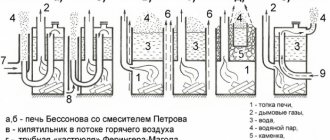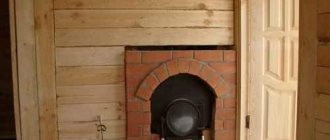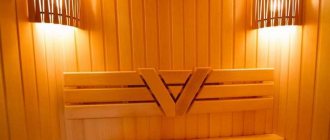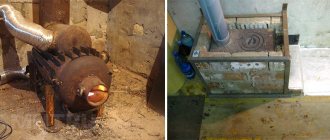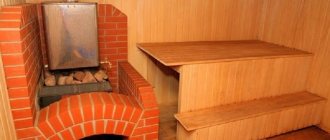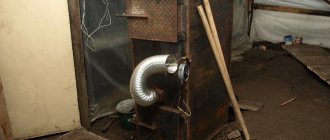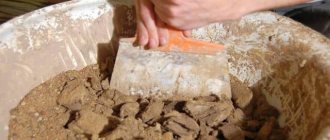The wood stove is one of those ancient inventions of mankind that is still widely used today. The design of these structures, of course, has changed and improved over time in order to increase operational efficiency and expand functionality. However, the presence of some departments and parts remained unchanged - this is the combustion chamber, the chimney pipe, the valves and, of course, the grate for the stove.
Grate for the furnace
The grate is essentially a separator between the combustion chamber and the ash pan. In addition, thanks to its lattice configuration, air supply is provided, without which no solid fuel combustion process is possible. It is clear that the grate constantly experiences extreme thermal loads, and therefore internal stresses, which imposes special requirements on its design and material of manufacture.
Therefore, most often, even in home-made stoves, they try to use factory-made grates - models that have been proven in operation, the durability of which you can rely on. The dimensions, configuration and cost of the grate depend on the design of the furnace, the parameters of the combustion chamber, as well as the type of solid fuel used.
Installing a grate in a furnace
Now let’s figure out how to properly put the grates into the oven manually.
It is known that materials are susceptible to expansion when heated, which is why grates need to be installed with a gap of at least five millimeters on all sides. In the firebox it is necessary to cut off a ledge. The grille is installed with edges. In a brick stove, the location is determined one brick below the combustion door. This is necessary to prevent hot coals from falling onto the floor.
During installation, it is not recommended to close the grates too much. Different materials, when heated, expand with different forces, and very strong fixation of the device can cause deformation or lead to cracking of the masonry. After laying the grating, the grooves are tightly filled with sand without cement.
As you can see, the grate has its own role in the oven.
Cast iron is the best material from which such a stove element can be made, as it is characterized by durability and reliability.
When choosing a grate, it is worth remembering the type of fuel, its weight, and the size of the gaps. Monolithic options are easy to install, and stacked ones are ideal for assembling gratings of unusual dimensions.
The grate for the stove, like the combustion chamber, chimneys and flue pipes, valves, views and other sections and parts, have changed little since the invention of wood-burning stoves. Stove grates, or grates, are necessary to separate the combustion and ash chambers, but must allow air to pass through to the place where the wood is burned, so the grate is always grated. Grate bars are located at the very epicenter of combustion, work under extreme conditions of thermal loads, and the material of the grate bars for furnaces must match and withstand all external factors. Even for a small homemade stove, craftsmen use factory grates that will not let you down and will work for a long time. The size, shape and price of the grates depend on the stove model and the type of fuel.
High-quality gray cast iron, the material for classic grates, can withstand thousands of high-temperature cycles without deteriorating. Steel grates are also available. The main function of the grate is to separate the chambers with air supply to the fuel load and remove ash from the combustion chamber. In order for the heating furnace to work efficiently, the grate must provide and regulate the air supply, due to the special structure of the grate itself and/or opening the ash doors or valves. The air flow from below, from the blower chamber, must pass freely. Each furnace has its own flow circulation scheme, and accuracy in installing the grates is very important, without displacement from the seats according to the furnace diagram.
Types of grate by model - the grate can be either monolithic or prefabricated. The monolithic model is more popular and easier to install; they are simply placed in ready-made nests. There is a choice in the shape and dimensions of the grates, and for almost any model and type of solid fuel stove. But if the combustion chamber is complex in geometry, expanding or narrowing along the bottom, then a prefabricated grate is needed. Modular grilles have two or three jumpers and are assembled on site. Beam grids can be combined with extensions made from lintel elements.
Grate grates can be of a flat slab shape; as a rule, they are rectangular grates, but circles and segments are also possible. Stove grates are suitable for stoves, fireplaces and boilers operating on solid fuel and are selected according to the stove model. The basket-style grate is a rarity today, since in a country house closed combustion chambers for stoves and fireplaces are preferred, and modern glass doors provide a magnificent design and the spectacle of a living flame in the fireplace, without any risk of sparks and falling coals. But basket grates are used as decoration - the fuel filler cannot fall out of the basket, and air enters through the gaps in the grate.
Why is it needed?
As has already become clear, the grate is a grate that allows the air flow to penetrate directly to the combustion center below, and the ash to be removed through the holes to a specially designated place for it. So why do we need grates in a furnace? Installing a grate in a furnace allows you to solve a number of problems:
- Divides the combustion chamber into two zones - the combustion chamber itself and a niche for ash.
- Used for placing and drying fuel.
- Distributes the air flow from the ash pan.
- Promotes good traction.
- Together with the door it makes it possible to control and regulate the flame.
The grate, which is intended for installation in the stove, cannot be made from any metal. Since it is constantly exposed to high temperatures and oxygen, it can begin to oxidize very quickly. Only cast iron can survive in this environment for a long time
Grate for the stove: choosing the best cast iron grates
A stove design with a closed combustion chamber or an open hearth with a grate will work best with cast iron grates. But the correct choice of this element depends on several factors:
- Combustion chamber size;
- The type of fuel that is planned to be used;
- Furnace designs;
- How to use the oven.
Grate bars cast from cast iron are made in the form of a solid grate, a grate with jumpers, in the form of individual elements and special types of grates designed for open hearths.
The fact is that the length and width of the combustion chamber for stoves of different designs have significant differences. Some stove designs have a rectangular firebox, with grates covering the entire area. For other ovens, a small grate 25 cm wide and 30 cm long is sufficient. Some stoves are designed to fire logs of double length - 80 cm or even 1 meter. Therefore, when choosing, the size of the firebox is taken into account. Single beam models are also important for construction - a full standard grate is not always required, especially in small ovens; many of them are small in size and can get by with 4-5 grates.
For a stove that uses only wood, standard grate sizes of up to 25 cm in length are usually selected. In rare cases, when meter-long logs are used, the grate length is selected to a maximum of 900 mm and a width of 800 mm. But to use a furnace for coal, the grates are selected to be larger in size - 350 by 350 mm. In this type of product, not only the dimensions are increased, the thickness of the casting itself is slightly larger than conventional wood grates, but the distance between them is slightly smaller. This shape is necessary to retain small coals; when burning wood, the size of individual coals is much larger than that of hard coal.
The design of the furnace is also taken into account - for heating furnaces, mainly long grate models are used, in which the casting of the ribs has jumpers between them. And in heating and cooking stove models, grates with a large number of rods in the grate are used, this allows for several modes of fuel combustion and several options for heat treatment of products, from fast heating to slow smoldering on coals.
And of course, experienced stove makers will advise installing grates with rods depending on how the stove will be used. This concerns, first of all, the process of adding fuel to the firebox. If a firebox door is used, then thin grates can be installed, and if loading will be done through burners, then it is worth thinking about the additional strength of the metal.
Specifications
A structure of any size can be assembled from beam grates.
Depending on the type of fuel used and the design of the boiler, the grate bars are made of monolithic parts or hollow pipes. The latest models are air-cooled, which reduces the likelihood of metal melting. The shape and size correspond to the firebox of the appliance and the door configuration through which they must pass during installation.
The following types of grates can be installed in ovens:
- Tiled. They are a rectangular product with parallel crossbars. They are universal, as they have different intervals for all types of fuel.
- Baskets. Products with a volumetric configuration that is effective but difficult to maintain.
- Beam. They are set parts from which grates of any size and configuration can be assembled. They are used in self-manufacturing of boilers for assembling non-standard grates.
The correct choice of grate is as important as the chimney, damper and vent. Every detail is important in making a boiler.
Recommendations for collecting firewood
- You can burn with different types of wood, but to prevent soot from clogging the chimneys, 1/4-1/3 of the wood should consist of aspen;
- It is more profitable to buy firewood in logs of a given length and split them yourself, then in the stored (sold) volume of firewood there will be 15% more firewood, and the price will be 20% lower;
- At the same time, you will receive logs of the largest diameters (d>40 cm) from the lower part of the tree, which gives off more heat during combustion;
- It is convenient to work with logs d>40 cm according to the scheme for chopping large-diameter logs (see figure above): 1 – we chop off the first segment with a cleaver (double chip line), 2 – then the second segment and then with a simple ax we finish the work with the deck, getting 12 -17 logs. Young people enjoy learning the basics of firewood preparation;
- We put the resulting wood chips in a separate container and carefully use them during kindling.
- The final touch of use. The flame in the stove has gone out, the red coals are giving off their last warmth, we are getting ready for bed. However, having overcome daytime fatigue, we load the firebox with washed potatoes, and in the morning there are warm baked potatoes on the table.
Of course, any stove requires care and care in operation, but how pleasant it is in the fall to feel the warmth in the house, which is created not by an electric heater, but by a live fire. If you are also a supporter of this method of heating your home and are ready to understand the diagrams presented above, your home may also have a bell-type stove that “keeps” heat for almost the whole day
You can find out additional design details, as well as details of the construction of a bell-type furnace from the author of the diagrams and its owner on his blog page
If you are also a supporter of this method of heating your home and are ready to understand the diagrams presented above, your home may also have a bell-type stove that “keeps” heat for almost the whole day. You can find out additional design details, as well as details of the construction of a bell-type furnace from the author of the diagrams and its owner on his blog page.
Photos by Vitaly Groshev.
Recommendations for selection
The clearances for coal should be larger, since combustion produces large slag.
When choosing a grate for a boiler, it is necessary to take into account what type of fuel will be used in the operation. Cast iron grates for stoves have different dimensions, but the main criterion is the size of the gap in the grate. It determines the size of the waste that will fall out of the firebox through them.
Recommended clearance:
- for coal - 30x300 mm or 28x205 mm;
- for firewood and briquettes - 140x115 mm or 330x250 mm.
The optimal ratio of the area of the gaps and gratings is 1:1. Deviations in one direction or another lead to a decrease in the efficiency of the device.
Buying tips
For high-quality combustion, not only the size of the grate is important, but also the weight of the fuel that it can withstand in one laying. The rods should not deform or wear out.
The grate must have a sufficient number of holes - at least 40% of the area of the part itself. If this figure is lower, then there will not be enough oxygen to maintain the fire, and the ash will remain on the grate and clog the stove.
If the gaps in the grate have a large area, then the remaining fuel will fall from the combustion chamber into the ash pan. Fuel consumption will become uneconomical.
Operating principle of the furnace
We keep the house warm according to the weather; it is convenient to heat the stove in the evening for 2-3 hours. Each stack of firewood - 3-5 logs 33 cm long is limited by the dimensions of the firebox in plan - 38x38 cm. With each firebox we burn 12-17 logs, per season 4 cubic meters, taking into account the bathhouse and waste incinerator.
The main part of the heat is accumulated in the hood, which allows you to dry wet towels and wet clothes around the clock. The reversible sleeve allows you to warm your back and quickly relieve fatigue. The stove works as follows: combustion products (smoke) make 4 turns:
The pattern of movement (turns) of smoke is marked with numbers in circles.
1st turn - at an angle of 90 degrees from the firebox to the hood; 2nd turn - in the hood the smoke is divided into two streams and each goes around an angle of 180 degrees along the arc of the hood; 3rd - at an angle of 90 degrees - the right flow of smoke from the hood enters the reversible sleeve (short path), and the left flow, having passed under the hood (long path), also ends up in the reversible sleeve; 4th - at an angle of 90 degrees from the transfer sleeve into the pipe.
The movement of smoke in each element of the stove is different, and this is especially evident in the reversible sleeve, in its chimney, which in area (25x25 cm) is twice the size of the previous chimney of the hood. Once in the transfer hose, the smoke “rests” there - its pressure, speed, temperature drop and it is in no hurry to enter the pipe - to make the last turn.
Therefore, there is a springboard in the reversible sleeve, but that’s not all. The stable draft of the pipe is created by its heated base and the walls of the chimney. When finishing heating the pipe, leave hot coals at its base and close the door of the mini-fireplace. Now (after a long period of inactivity) you can light the stove.
The high efficiency of the stove is due to the chimney system located in the hood. The chimneys of the hood are heated on both sides, so they heat up more than the outer masonry of the hood. When the oven cools down, the hood retains heat longer than other elements, because heated from the inside by brickwork of internal chimneys. For such a benefit, as for a bed, payment is due in the form of the space occupied on the floor.
The bell-type stove occupies 16% of the room area (18 sq.m.).
The ash pan of the stove, thanks to its large height (25 cm), allows you to remove ash 1-2 times during the month; its volume (8 liters) is convenient to accumulate or immediately fertilize trees and shrubs.
When the stove returns to normal operation, the smoke from the chimney is not visible at all or is barely noticeable. Sometimes, to warm up the room a little, we only use a micro-fireplace.
During the period of operation (14 seasons), the following points in the kindling were identified:
- the most reliable thing is to split a dry aspen log a year or more old into twigs;
- If there is no dry firewood, we do the same with wet firewood and in the morning we put it in a well into a heated oven. During the day the firebox will dry out the contents, in the evening there will be kindling from one match;
- Birch bark is better suited than newspaper for burning wood - the top thin layer of wood, even wet birch;
- Chips of dry aspen are ideal for quick kindling, because it’s not for nothing that matches are made from it.
Peculiarities
The grate is made by hand as a single piece; most often, cast iron is used for its production. The grille of the structure has holes through which air is drawn to the fuel.
The part is laid in such a way that the grille holes are directed from the door opening to the rear wall. For large combustion chambers you will need several grates.
It is quite possible to make a grate with your own hands. It is an important element in the combustion chamber, thanks to which it is possible to obtain efficient combustion of fuel. The designs of modern furnaces and boilers are constantly changing, and details are being improved. But there is a functional element that you can’t do without. This element is the grate.
The grate serves to support wood, coal and fuel briquettes. Through its holes, ash pours down, thereby freeing up space for a new batch of firewood. Grate bars vary in design and are made from different materials.
Classification of grate
Cast iron grates for stoves were and are still the best option. Steel is less resistant to this mode of operation and is not able to accumulate heat, as cast iron does. Therefore, despite the heaviness of the material, it is cast iron wood-burning stoves - Harvia, for example, and cast iron grates that are considered the best. Moreover, this applies to models both for baths and for heating living quarters.
However, this classification exists:
- steel gratings are lighter. If you know how to handle a welding machine, they can be made with your own hands - for a bath structure, for example. However, the material burns out faster because it is less resistant to chemically aggressive substances.
- Cast iron grates for sauna stoves or other structures are much more stable and, therefore, have a long service life.
Another classification of devices is related to the type of device.
- Fixed - usually a lattice with different sizes for different types of construction. This element does not change its parameters and does not move. There are several types of grating: tiled flat - lattice flat rectangle. This is the most popular option and is used for any wood-burning sauna stoves, solid fuel heating boilers, fireplaces, and so on. The photo shows the Harvia model.
- basket - designed for open fireboxes and originally developed for cooking. This device is no longer used, and there are almost no open fires, so the popularity of this model is not great;
- beam - in appearance they resemble a construction beam. The lattice of them is assembled with your own hands, choosing the appropriate size and quantity. This is the best method for fireboxes of non-standard sizes.
The chain grate belongs to the same category: its elements are connected by chains. However, in practice it is extremely rare, since it does not ensure complete combustion.
How to install a grate
To select the appropriate device, the most important are the dimensions of the grate for the stove, and not its purpose - for a bathhouse or living room. Moreover, both the dimensions of the furnace structure itself and the type of fuel are important here.
So, for coal, the grate should be more massive, since the weight of stone fuel is higher, while for wood, you can choose a lighter model.
It is worth paying attention to the total number of gaps - at least 40%, otherwise the air will flow poorly, and the accumulating ash will not be poured into the ash pan
The installation process itself is extremely simple.
- The grate bars of the stoves are laid with your own hands on a stone ledge formed from brick during laying, or welded to the walls of the body of the iron sauna model.
- The gap between brick and cast iron must be at least 5 mm. There is no need for this in a steel structure for a bathhouse, since the thermal conductivity of metals is much closer.
- As a rule, the cast iron grate is placed 1-2 rows below the fire door to prevent coals from falling out.
- After laying, the gap is filled with sand - it will compensate for the expansion of the metal when heated.
The view shows the installation process of the grate.
- Heating stoves Vesuvius
- Masonry of a Russian stove with a stove bench
- Rules for installing a stove in a wooden house
- Electric stove for saunas and baths: from selection to installation
Tile grate
One of the most common types of grate is the tiled grate. The main feature of this design is the observance of strictly fixed dimensions. This grille is designed for an installation site of a certain size.
A mandatory condition must be met - the presence of a gap between the outer perimeter of the grate and the walls of the firebox of at least 5 mm. If this size is not maintained, the cast iron grate may expand greatly when heated and damage the firebox.
Cast iron grate for furnace
Over the centuries, the external and internal design of the stove has been changed and improved in order to increase heat output. Structurally, elements such as the valve, stove, oven could change over time, but an important element of the hearth remains unchanged - the cast-iron grate for the stove.
The configuration, dimensions, and cost of the grate depend on the design features of the furnace, as well as the type of solid fuel. The grate is a grate installed in the firebox, dividing it into two parts: the ash pan and the combustion chamber. It provides the formation of an air flow that supports the combustion process of solid fuel due to natural convection.
Tasks and types
Solid fuel is placed on the stove grate, and the ash formed during its combustion is poured through the grate holes into the ash pan. The resulting slag prevents the grate from overheating. The grate provides high-quality draft from bottom to top, and together with the oven door allows you to regulate the strength and duration of the flame.
Cast iron and steel are used to produce gratings. Cast iron grates are installed in stoves and fireplaces because they do not require special operating conditions and can withstand high temperatures well. Steel grate bars are used primarily in industrial workshops. The dimensions of cast iron grates for a stove, as well as their weight, depend on the type of fuel used.
Depending on the type of construction, there are two types of cast iron grates:
The one-piece type of grates cannot be disassembled; it is selected individually for the stove depending on the size of its firebox.
Prefabricated grate bars consist of a certain number of elements from which a grate of the required dimensions can be assembled.
There are four types of grate shapes:
- Tiled flat model
A universal flat rectangular grille, suitable for most solid fuel fireplaces, boilers, and stoves. To buy one, you need to know exactly the size of the firebox.
Basket
A design of this type was used on open fireplaces; today it is obsolete.
Beam
The design of this type is a kit model consisting of single or double cast iron slats, from which you can assemble a grill of non-standard dimensions. When using a beam grate, the slats must be freely placed in and out of the firebox, while there must be a gap for expansion of at least 5 mm to avoid deformation of the metal and masonry.
Movable
A long-burning stove is usually equipped with a movable grate. This is a structure consisting of a shaft and several moving sections. The vertical and horizontal axis of rotation of the shaft improves the process of fuel combustion and cleaning the grate from ash, while the width of the gaps in it is adjustable. A rotation angle of 30 degrees leads to loosening of the slag and shedding of ash into the ash pan. The angle can also be 180 degrees, but the installation of such a movable grate requires the presence of special recesses in the brick, so it has a high cost and limited use.
A separate type are cooled grates, or KROK, installed in hot water furnaces and water heating boilers. They are made from solid cast iron pipes. Air is supplied through special holes, showering the ash, while maintaining a temperature of up to 1000 degrees of hot solid fuel. Coolant circulates inside the tubes, cooling them.
Selection rules
The selection of the appropriate grate model should be based on the type of fuel used. The size of the grate and the weight it must withstand when loading firewood into the firebox depend on this. Small grates are used for wood stoves and fireplaces, and large grates are used for coal stoves. The minimum grate size is 140x120 mm, the maximum is 800/900x200 mm. The optimal size for burning wood is 140/330x120/252 mm, for coal - 350/300x205 mm.
When installing a grate in the firebox of a fireplace or other stove, it is necessary to make recesses around its perimeter of at least 5 mm, since the metal will expand when heated. The ledge on which it will be installed must be hewn. If the installation is in a brick fireplace, the grate should be placed one brick below the door so that the coals do not fall out of the firebox. After laying, the grooves are filled with sand (without adding cement). Correct installation of the grate is carried out when the grate is placed with expanding gaps between the rods downwards, and not upwards.
It doesn’t matter what shape or cost the grate has. Its quality can only be judged by the material from which it is made, the thickness of the grille bars and the size of the gaps between them.
Ways to solve the problem
If the grate is damaged, there are two options: fill the ash chamber with a brick or install a new grate.
The option of filling is acceptable only if the integrity is damaged or there are cracks and it is impossible to eliminate them at the base of the ash pit. At the same time, it would be good to replace the firebox door from a blank door to a door with a grille to regulate the flow of secondary air. But this option will definitely create a lot of unnecessary trouble and reduce the efficiency of the furnace. Therefore, we change the grate.
The grate is usually made of cast iron. Cast iron is very different from brick in terms of CTE - coefficient of thermal expansion. This indicator for iron is much higher than for ceramics. Therefore, the grate is always placed freely with a gap of 5-10 mm around the entire perimeter. Some manuals recommend filling the gaps between the masonry and the grate with sand. But this is very stupid advice. Unnecessary and even harmful. Firstly, the sand from the heat of the coals (and it can reach 1100 degrees Celsius) simply sinteres - vitrifies, tightly welding the grate to the masonry and depriving it of the necessary freedom. Secondly, after the first fire, this gap is filled with ash - a non-flammable and non-caking material. So why make unnecessary movements?
It is important to place the grate correctly - an inverted grate quickly becomes clogged with ash and stops working. Therefore, we remember that the grate slits expand downward, not upward. Sometimes the grate has a thickening in the middle - this is to equalize thermal stress, and not to roll the coals to the edges, as some people think.
The figure shows the correct (bottom) and incorrect (top) position of the grate
Usually the grate is placed in a brick trough or in grooves selected in the brick. If the integrity of these grooves is damaged and it is impossible to restore them, you will have to come up with some kind of supports. Sometimes they try to get out of the situation by driving nails, metal plates, etc. into the seams of the masonry. All this is in vain - the metal is quickly tempered and ceases to hold the grate, and more massive pieces of iron are unacceptable - they will tear the masonry.
Installation of grate
The grate is usually installed during the construction of the furnace. However, sometimes it is necessary to replace it in an already operating heating device or structure. In this case, it is necessary to understand for what reasons this unit was damaged or fell out of its seat.
An example of installing a grate in the combustion chamber of a brick kiln being built
When building a brick oven, the seat must exceed the dimensions of the grate by 5 mm on each side of its perimeter - this thermal gap will be an excellent protection against damage to the masonry and from deformation of the metal part itself when heated to high temperatures. As you know, all materials expand when heated, but the linear expansion coefficients of brick and metal differ quite significantly, and this requires a mandatory compensation gap.
As a rule, the bricks framing the nest for the grate are cut slightly at an angle, approximately as shown in the illustration above. This makes it easier to install and, if necessary, dismantle and replace the grille, and simplifies the process of cleaning it.
These gaps between the brick and the lattice are filled with dry sand or a mixture of sand and clay. But under no circumstances should cement-containing mortar be used. Sometimes an asbestos cord is laid along these cracks.
As a rule, the plane of the grate should be one row of masonry below the fire door - this prevents burning coals from falling out when the stove is opened. Naturally, this rule must also be observed in fireplaces with an open firebox - the lower edge of the hearth should be higher than the grate.
The grate also needs to be correctly placed in place, without mixing up the sides. Very often, the grate lintels have a triangular (trapezoidal) shape in cross-section. In this case, the pointed side should face towards the ash pan.
In conclusion, it is necessary to briefly summarize the information presented above:
The dimensions of the grates are most often subject to standards. When drawing up furnace designs, they usually start from these established dimensions. But if necessary, you can assemble a grate of a more complex or non-standard configuration using separate beam grates or small modules. The manufacturing material is selected depending on the selected fuel. But by far the best material for metal stove fittings, proven over many years of use, is cast iron.
But even among cast iron grates there are divisions into wood-burning or coal stoves. When installing the grate, it is important to properly prepare the seat in advance. It is easiest to install monolithic grate bars. But the stacked and beam options expand the possibilities, usually last longer, and their maintainability is much better
It is easier to replace one, for example, cracked grate, than the entire grate.
However, some stove owners try to make grates for their appliances themselves. This is often motivated by the fact that really high-quality cast iron is too expensive. And what is now on sale, in their opinion, often does not stand up to criticism.
Yes, a steel grate will not last very long. But for a craftsman it is easier and cheaper to make a new one than to purchase a ready-made model.
Well, this point of view has its right to exist. For example, here is a video on this topic:
What it is?
The ash pan is the same as the ash pan. An ash pan has long been included in the design of any stove. This is a chamber under the firebox grate, which is equipped with a metal tray.
When any material is burned in a furnace, ash and ash remain. For such waste, a special place is needed, and that is exactly what the ash pit is.
It's hard to imagine a stove without a blower. Then the entire structure ceases to function normally, and may even make no sense. After all, the ash pan is an important component, without which all excess waste would come out.
Dust from the firebox is transferred to the ash pan using a grate. The air thus gets to the fire and allows the fuel to burn as efficiently as possible. After which the air passes further and is removed into the chimney.
A little history
Previously, firewood was burned on a blind hearth - combustion air was supplied through a slightly open fire door. This method has a fire hazard - coals may fall out of the firebox. It is also difficult to accurately select the optimal combustion mode - the regulator is very rough. The ash that covered the coals over time also did not contribute to the normal combustion of fuel - it is an excellent heat insulator (in the combustion chamber of a Russian stove, this is exactly how coals were stored in the ash for the next kindling). Therefore, they began to install a grate - a grate on the hearth through which oxygen enters the combustion zone. The ash is also removed through the grate - nothing interferes with the combustion processes.
The absence of a grate or its damage is not critical - the stove operates without it. True, the efficiency is somewhat lower. And the zone of intense heating of the masonry moves below the hearth - now the base of the ash chamber is also heated. And here you need to be careful if the stove is installed on a wooden base.
Types of grates
Grate grates are divided into several varieties according to different criteria.
So, they can be divided into monolithic and typesetting.
— Monolithic models of gratings are more common, they are much easier to install - they immediately fit into a nest prepared for them of the required dimensions. The wide range of shapes and sizes of gratings on sale most often allows you to get by with just this option.
Options for monolithic and prefabricated grate
— Prefabricated grate bars are assembled into a single structure directly at the seat. These can be modules with two or three jumpers.
A prefabricated grate is convenient in cases where the bottom of the combustion chamber has a complex geometric shape, that is, it should be narrower in one place and wider in another.
This also includes the so-called beam grate - this is also a stacked version, consisting of individual crossbeams. The elements of the beam grille must pass freely and be removed from the combustion chamber through the open door. Actually, if you look at it, it is precisely such a separate beam that is called a grate.
Prices for grates for ovens
grate bars for the furnace It is from these individual parts (grid bars) that a prefabricated beam grate is formed
In practice, monolithic grates, if necessary, can be combined with stacked elements, in the case of the same non-standard shape of the combustion chamber.
The slab grate has a flat shape (usually rectangular, although there are also round grates). This product option is suitable for most solid fuel heating appliances - stoves, boilers, fireplaces. The slab grate is selected in accordance with the furnace design, which specifies the parameters of the seat.
Basket grate “Riva Grate”
Basket type grate. This type of grate was previously widely used in fireplaces with open hearths. It is convenient because the firewood being laid is not on the surface of the grate, but as if inside it, without the risk of falling out through the open hearth. But at the same time, air access to the fuel is completely preserved.
Nowadays, basket grates are no longer used in fireplaces so often, since many home owners prefer mainly closed combustion chambers with panoramic glass doors. However, such grates are also available for sale. In addition, master blacksmiths willingly accept orders for their production according to individual projects. And then the basket grate also becomes a decorative part of the fireplace.
Basket grate for the fireplace, made to order by a craftsman
A movable grate is usually intended for long-burning furnaces. The structure may consist of a frame and a grille installed in it on the axis. Another option is gratings with horizontal movement. Changing the position of the grate helps its self-cleaning - it helps to loosen slag or ash deposits and remove them into the ash pan chamber. In some cases, movable grates also change the geometry of the channels for incoming air, which is used to control the operating modes of the furnace.
One of the design options for a movable grate
There are models with sections rotating 180 degrees. However, this design must be included in the furnace design, since such movement of the grate requires special recesses in the brick wall. Therefore, these models have limitations in application and are quite expensive.
Separately, it is worth highlighting the cooled type of grate, which is usually installed in hot water boilers or furnaces with a water heating circuit. In another way they are called “KROK” - “cooled grate”. This version of the product is made from monolithic heat-resistant pipes in which the coolant circulates, cooling their surfaces. Thus, the firebox maintains a temperature that ensures safe operation of the unit, and the heating system receives additional thermal potential.
Diagram of a KROK-type grate
Most often, the production of such grate structures uses rectangular or square pipes in cross-section, located in parallel, with a pitch of 15÷20 mm. In the interpipe space, at a distance of 20–30 mm relative to each other, sections of steel rods are welded, which are compensators for the rigidity of the grid. On one side, the grid pipes are connected to a collector that supplies cooled coolant from the “return” pipe of the heating circuit, and on the other to the outlet pipe, through which water then flows into the main heat exchanger of the boiler.
